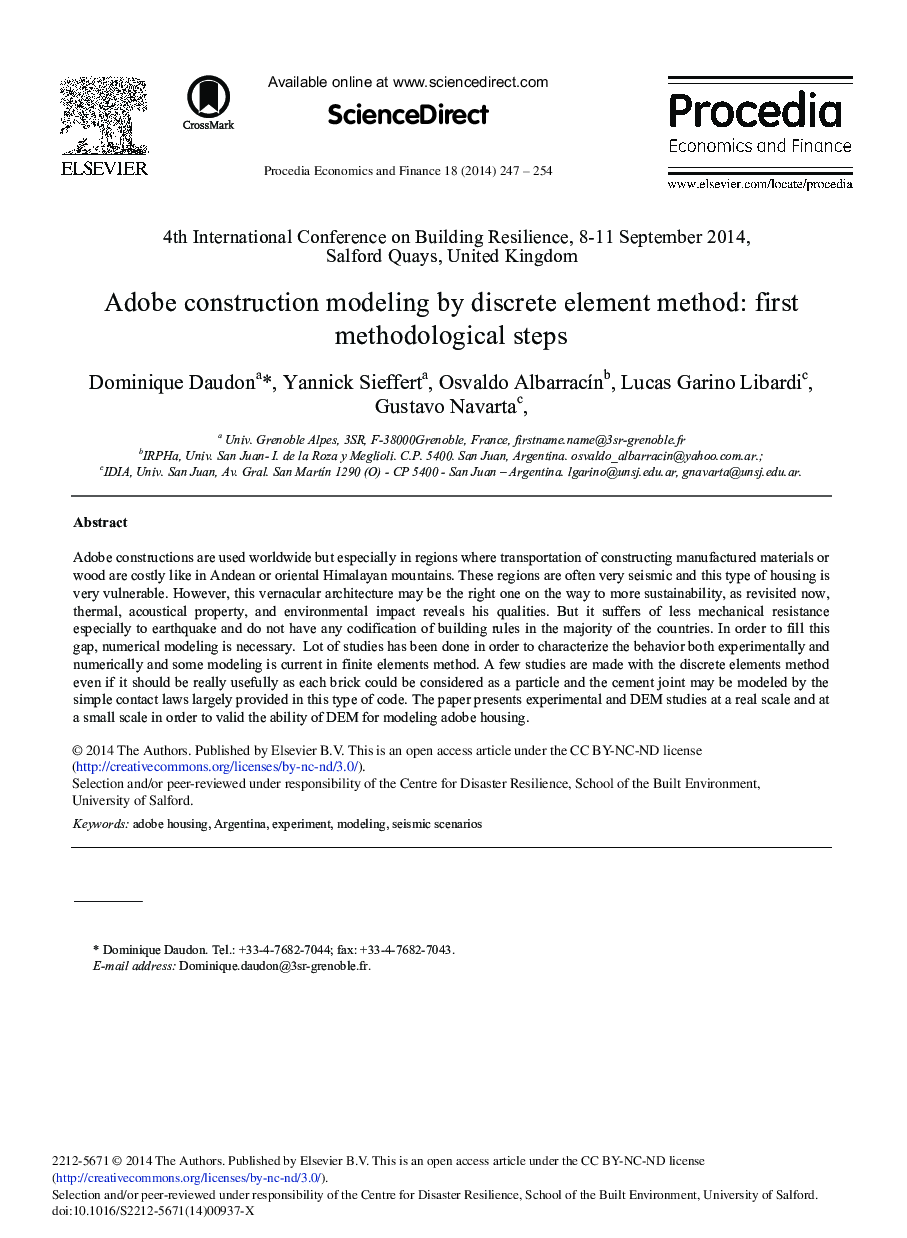| Article ID | Journal | Published Year | Pages | File Type |
|---|---|---|---|---|
| 981501 | Procedia Economics and Finance | 2014 | 8 Pages |
Adobe constructions are used worldwide but especially in regions where transportation of constructing manufactured materials or wood are costly like in Andean or oriental Himalayan mountains. These regions are often very seismic and this type of housing is very vulnerable. However, this vernacular architecture may be the right one on the way to more sustainability, as revisited now, thermal, acoustical property, and environmental impact reveals his qualities. But it suffers of less mechanical resistance especially to earthquake and do not have any codification of building rules in the majority of the countries. In order to fill this gap, numerical modeling is necessary. Lot of studies has been done in order to characterize the behavior both experimentally and numerically and some modeling is current in finite elements method. A few studies are made with the discrete elements method even if it should be really usefully as each brick could be considered as a particle and the cement joint may be modeled by the simple contact laws largely provided in this type of code. The paper presents experimental and DEM studies at a real scale and at a small scale in order to valid the ability of DEM for modeling adobe housing.
